
Gymnastics is a type of sport that includes physical exercises requiring balance, strength, flexibility, agility, coordination, artistry and endurance. The movements involved in gymnastics contribute to the development of the arms, legs, shoulders, back, chest, and abdominal muscle groups. Gymnastics evolved from exercises used by the ancient Greeks that included skills for mounting and dismounting a horse, and from circus performance skills.
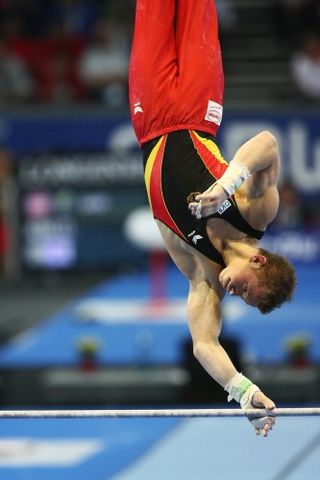
The horizontal bar, also known as the high bar, is an apparatus used by male gymnasts in artistic gymnastics. It traditionally consists of a cylindrical metal bar that is rigidly held above and parallel to the floor by a system of cables and stiff vertical supports. Gymnasts typically wear suede leather grips while performing on the bar. Current elite-level competition uses a stainless steel core rail. The gymnastics elements performed on the horizontal bar are regulated by a Code of Points. A bar routine, which is a sequence of several bar skills, usually includes giants with various grips, in-bar work, turns, release and regrasp skills, and a dismount. The horizontal bar is often considered one of the most exciting gymnastics events due to the power exhibited by gymnasts during giant swings and spectacular aerial releases and dismounts that often include multiple flips or twists and, in some cases, airborne travel over the bar.
Franz Ludwig Carl Friedrich Passow was a German classical scholar and lexicographer.

The pommel horse is an artistic gymnastics apparatus. Traditionally, it is used by only male gymnasts. Originally made of a metal frame with a wooden body and a leather cover, the modern pommel horse has a metal body covered with foam rubber and leather, with plastic handles.
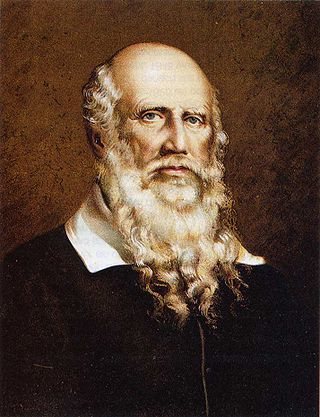
Johann Friedrich Ludwig Christoph Jahn was a German gymnastics educator and nationalist whose writing is credited with the founding of the German gymnastics (Turner) movement as well as influencing the German Campaign of 1813, during which a coalition of German states effectively ended the occupation by Napoleon's First French Empire. His admirers know him as "Turnvater Jahn", roughly meaning "Father of Gymnastics Jahn". Jahn invented the parallel bars, rings, high bar, the pommel horse and the vault horse.
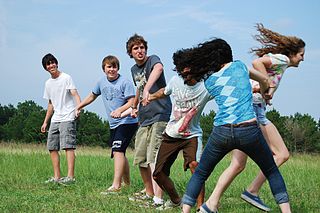
Red Rover is a team game played primarily by children on playgrounds, requiring 10+ players.
The Battle of the Systems was a controversy over the most effective system of exercise and calisthenics that spanned from the 1830s to the early 1920s, consisted of different systems of exercise mostly in a gymnastic or calisthenic-type format. It raged in the United States as states mandated physical education systems.

British Bulldog is a tag-based playground and sporting game, commonly played in schoolyards and on athletic fields in the UK, Canada, South Africa, Australia, and related Commonwealth countries, as well as in the U.S. and Ireland. The object of the game is for one player to attempt to intercept other players who are obliged to run from one designated area to another. British Bulldog is characterised by its physicality and is often regarded as violent, leading it to be banned from many schools due to injuries to the participants.

Pehr Henrik Ling pioneered the teaching of physical education in Sweden. Ling is credited as the father of Swedish massage.
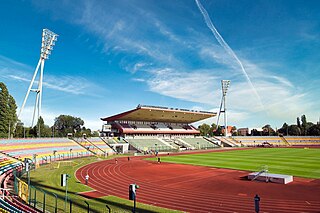
The Friedrich-Ludwig-Jahn-Sportpark is a multi-purpose sports complex located in the western part of the locality of Prenzlauer Berg in the borough of Pankow in Berlin. The sports complex covers an area of approximately 22 hectares and comprises several facilities. The main building is the Friedrich-Ludwig-Jahn-Stadion. The stadium is the third-largest stadium in Berlin, after the Olympiastadion and the Stadion An der Alten Försterei, with a capacity of approximately 20,000 seats, of which 15,000 are covered. Currently, the main tenants of the stadium are VSG Altglienicke and Berlin Thunder. Friedrich-Ludwig-Jahn-Sportpark was the venue for the 2018 World Para Athletics European Championships.

The Evangelisches Gymnasium zum Grauen Kloster, located in suburban Schmargendorf, Berlin, is an independent school with a humanistic profile, known as one of the most prestigious schools in Germany. Founded by the Evangelical Church in West Berlin in 1949 as the Evangelisches Gymnasium, it continues the traditions of the ancient Berlinisches Gymnasium zum Grauen Kloster, the oldest Gymnasium in Berlin, which for hundreds of years was situated in former monastery buildings in the city's Mitte district, closed by the East Germans in 1958. In 1963 the Evangelisches Gymnasium of West Berlin adopted its traditions and added "zum Grauen Kloster" to its name.

Johann Christoph Friedrich GutsMuths, also called Guts Muth or Gutsmuths, was a teacher and educator in Germany, and is especially known for his role in the development of physical education. He is thought of as the "grandfather of gymnastics" – the "father" being Friedrich Ludwig Jahn. GutsMuths introduced systematic physical exercise into the school curriculum, and he developed the basic principles of artistic gymnastics.

A gym, short for gymnasium, is an indoor venue for exercise and sports. The word is derived from the ancient Greek term "gymnasion". They are commonly found in athletic and fitness centres, and as activity and learning spaces in educational institutions. "Gym" is also the commonly used name for a "fitness centre" or health club, which is often an area for indoor recreation. A "gym" may include or describe adjacent open air areas as well. In Western countries, "gyms" often describe places with indoor or outdoor courts for basketball, hockey, tennis, boxing or wrestling, and with equipment and machines used for physical development training, or to do exercises. In many European countries, Gymnasium also can describe a secondary school that prepares students for higher education at a university, with or without the presence of athletic courts, fields, or equipment.

Karl Adolf Spieß was a German gymnast and educator who contributed to the development of school gymnastics for children of both sexes in Switzerland and Germany.

Johann Ernst Plamann was a German child educator. He based his work on the ideas of Johann Heinrich Pestalozzi and Friedrich Ludwig Jahn. Among his pupils was future German chancellor Otto von Bismarck.

Berlin is a major sporting centre in Germany and Europe. In 2013 around 600.000 Berliners were registered in more than 2.300 amateur sports- and fitness clubs.

Francisco Amorós y Ondeano, otherwise known as the Marquis of Sotelo, contributed to gymnastics in France and to the resurgence of sport in the so-called modern world in general.
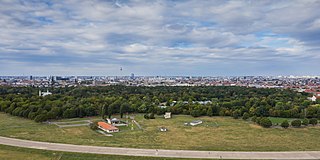
The Volkspark Hasenheide is a park of around fifty hectares in the Berlin district of Neukölln on the border with Kreuzberg. The name of the park goes back to the use of the area as a rabbit enclosure from 1678. The Great Elector, Frederick William hunted there.


















